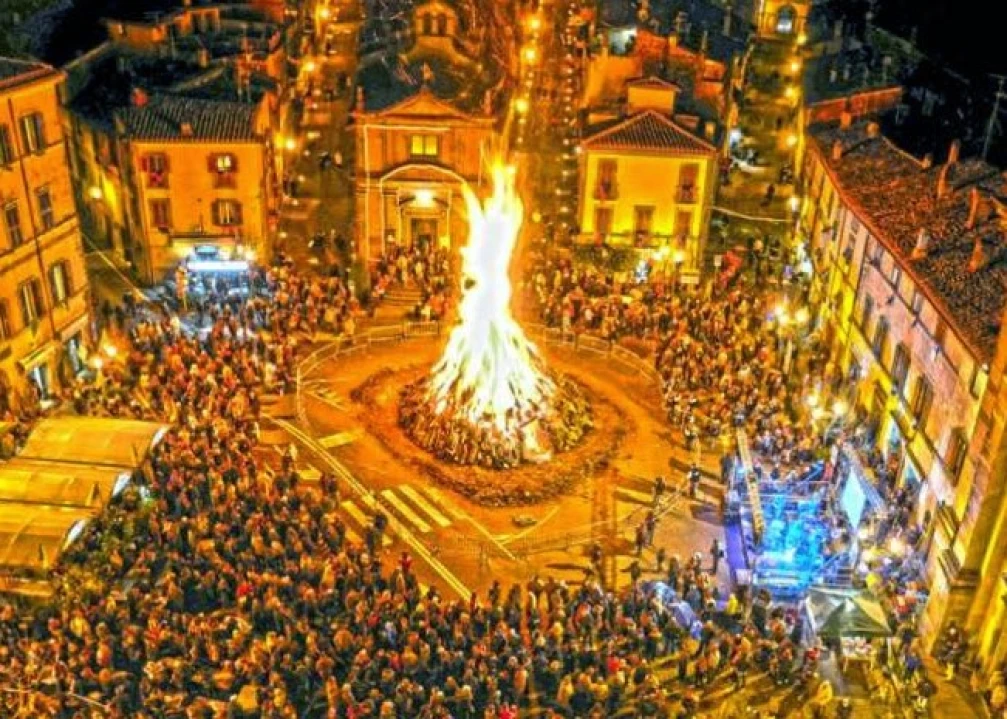January 17th is the feast day of a universal Saint: Saint Anthony Abbot, to whom the deepest tradition, the sacred fire, is linked. This is the meaning of the numerous bonfires that every year are lit on this day in the Italian and European countryside. The propitiatory fire of fertility, protective and purifying, a fire that belongs to the past traditions, but able to remain lit even in modernity, the burning fire that must always remain lit.
In the popular tradition, fires lit all over Europe had the purpose of promoting the health and reproduction of livestock for the intercession of the saint in whose honor they were lit. It is therefore easy to see in this custom the ritual of ancient pagan rites reworked and adapted to the Christian religious context. In this case the role of a patron saint of domestic animals overlapped that of an archaic protective deity, or "lady" of the livestock.
In pre-Christian rituals, livestock were forced to jump over fires or embers, or to run through the smoke, as was the case with the "fires of misery" lit in various parts of Europe. Pagan and Christian motives are intertwined and when these cults are present among the people, it is never an invention, or a mere superstition, as the popular tradition repeats the ancient memories.
Saint Anthony Abbot is a saint of Egyptian origin to whom the devotees entrust themselves, their families and their animals because he is able to defeat the devil.
The first symbol of Anthony Abbot is the fire that sanctions the origin and the end of the universe. Let's not forget that this element is the symbol of communication between man and the mysterious manifestation of God, as Dante says in Paradise. It is the TAU that we see Saint Anthony holding in the most popular iconographies. According to tradition, the Saint descended to the underworld and, after lighting his staff, he returned to earth to give the fire of life to men. The symbol of Tau recalls the Egyptian cross and indicates the immortality of the Sun.
Another symbol is the bell that represents the harmonic sound of creation (the mischievous tinkling flower): the famous sound of the angels. Antony then always wonders with what seems to be a pig: in reality it is not a pig but a white boar and this association brings us to the Celtic world. For the Celts this animal was associated with the functions of the priests, among whom the best known is Merlin/Myrddin.
There is not a precise place where the Saint is celebrated, as he is celebrated everywhere. On January 16th, a little bit everywhere there is a parade of carts with old costumes and animals, from the decorated baskets children offer a kind of bread. In the evening bonfires are lit and people eat together barbecued meat, sausages and wine. In keeping with tradition, it is still the custom of devotees to collect and take home a burning embers or a bit of embers for protection and devotion.
The day January 17th is dedicated to animals. In the town square, breeders bring animals of different kinds to the blessing of the parish priest: usually the animals were compelled to eat salt, perhaps for purification. Salt has the same function as bonfires for the earth. Then there is the open-air "mass" and the procession, where people compete to carry the statue of the saint through the streets of the village. Currently, the ceremony of the blessing of animals has been replaced especially in Northern Italy, with the blessing of tractors or machinery used to work the land.




